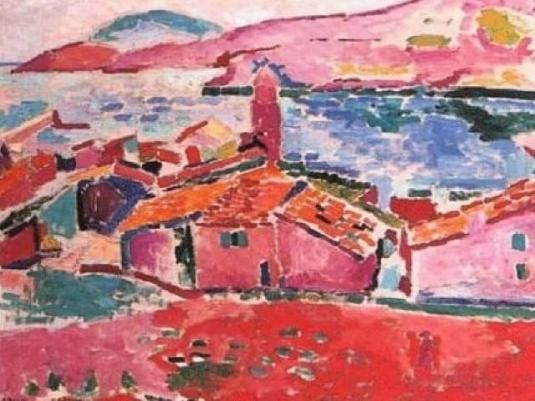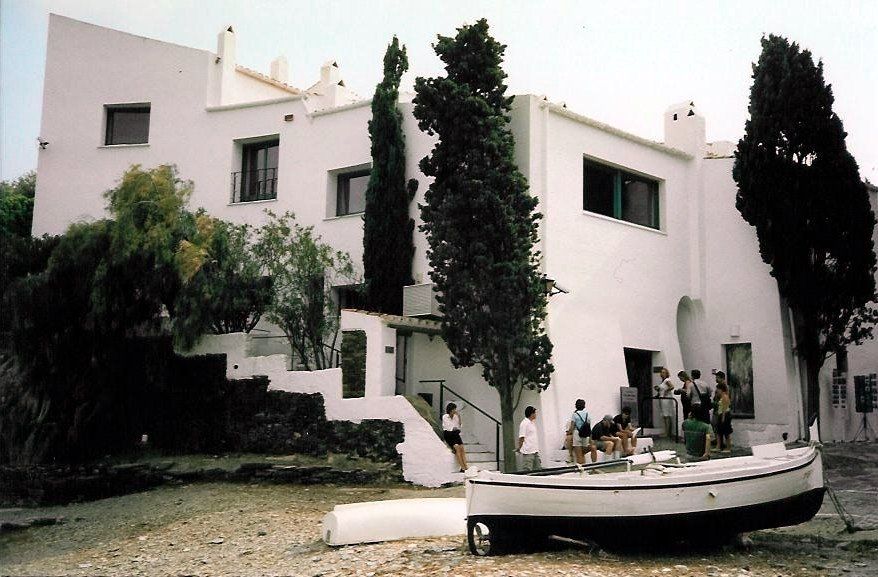Triangle d'Art
*Céret *Collioure *Cadaquès
In the footsteps of Picasso, Matisse, Dali...
A cultural stay on both sides of the Pyrenees
At the turn of the 20th century, many famous and up-and-coming artists,
locals or passing through, will exalt the light and colors of the Mediterranean.
From the hills of Vallespir to the shores of Côte Vermeille and Costa Brava, discover the sites
who inspired them, the towns and villages where they lived, the museums they helped to create.
Wines from the prestigious estates of Collioure-Banyuls and Empordà
are present at each stage to accompany delicious local cuisine.
Our programs combine walks, cultural visits and excursions that can be adapted as desired.
The artistic heritage
from Fauvism to Cubism
Early 20th century: Catalonia becomes a prime destination for artists of all stripes. Painters seek the brilliance of the light and a low-cost lifestyle.
Meetings stimulate creativity and clans are formed based on affinities.
Matisse and Derain in Collioure were the precursors of Fauvism. In Céret, Soutine and Krémègne conceived an original style, while Picasso, Braque, and Juan Gris illustrated the Cubist movement.
In Cadaquès, refuge of the intelligentsia, Salvador Dali imposes himself on everyone as the genius of Surrealism.
Prestigious terroirs
Collioure-Banyuls & Empordà
Banyuls' naturally sweet wine gave the Catalan port its trademark image very early on. But the phylloxera crisis and two world wars nearly ruined the Côte Vermeille terroir.
Fortunately, the 70s and 80s saw the vineyard revive thanks to quality grape varieties and today the "Collioure-Banyuls" appellation is a reference throughout France and Europe.
In Spanish Catalonia, since the end of the dictatorship, rapid modernization has allowed the rise of the "Empordà" appellation between the foothills of the Pyrenees and the north of the Costa Brava.
A protected nature
between sea and mountain
On both sides of the Pyrenees, the border area boasts vast natural spaces. This is the case in the mid-mountain region with the Massane Nature Reserve on the French side, which borders the Albera Natural Park on Spanish territory.
On the coast, the Banyuls-Cerbère Marine Nature Reserve protects and enhances a large portion of the Vermilion Coast. But it's the Cap de Creus Natural Park that stands out for the wild beauty of its rocky coastline and the solitary spaces with unique panoramic views of the peninsula.
A stay
custom made ?
Contact us!
* Independent weekend
or
* 3 days of discovery
or
* 1 full week
with a specialist guide
of Catalonia
* Excursions and guided tours
-------------------------
* 1/2 day and day
on a hike
-------------------------
* Half board or
full board
all year round
1. Banyuls sur Mer
Stroll through the town of Aristide Maillol to discover the old quarter where
he loved to work.
Detour through the vineyard towards
the farmhouse which houses his tomb.
Tasting of Banyuls natural sweet wines.
Optional: relaxation at the thalassotherapy center or visit to the Arago Laboratory Aquarium.
Local dinner in Banyuls or Collioure.
4. Customs trail
A day of walking or hiking along the famous coastal path to Cap Béar and Anse de Paulilles, a restored site perfect for natural and cultural discoveries. A stopover in Port Vendres, a cruise port of call.
At the end of the day, tasting of the Banyuls-Collioure terroir wines at the cellar.
Dinner in Banyuls, Collioure or Port-Vendres depending on the option.
2. Collioure
We stroll through the colorful streets of the port where Matisse settled in 1905, soon joined by Derain, Dufy and many others.
This is where the beginnings of the Fauvism school were formed. From the old windmill, a path leads to Fort Saint Elme, an ideal vantage point for sweeping panoramas of Roussillon and the Côte Vermeille.
Gourmet dinner in Collioure.
5.Cadaqués
A surreal stopover in the famous Dalín village and its cobbled streets. The Cap de Creus Natural Park offers a magnificent setting of rocks sculpted by the sea and the wind.
At Pla de Tudela, a major source of inspiration for Salvador Dali, you will find all the symbolism of the Catalan artist.
In the evening, "tapas" and typical cuisine featuring seafood.
3. Ceret
Along the streets of the old town on the very spot
where the easels were placed.
At the city's Museum of Modern Art
Picasso, Braque, Juan Gris, Soutine, Krémègne, Masson… Céret was nicknamed the "Mecca of Cubism". In the shade of the hundred-year-old plane trees, you can enjoy a moment of relaxation on the café terraces.
Local cuisine on the menu for lunch or dinner.
6. Figueres
The morning is dedicated to a visit to the prestigious "Teatre Museu Dali" which houses the artist's tomb. The stay ends in style with a gourmet lunch at the restaurant where the Master had reserved his table.







